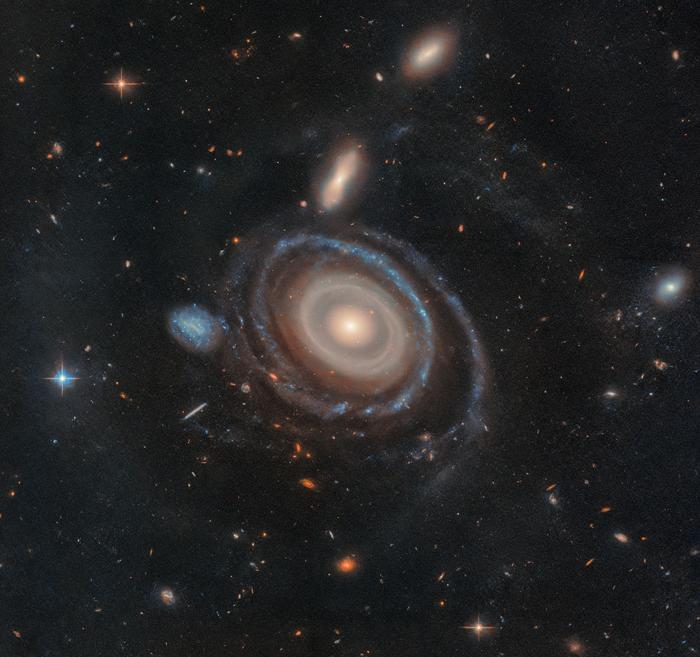“This was a serendipitous discovery,” said Imad Pasha.
How many rings can galaxies have? This is what a recent study published in The Astrophysical Journal Letters hopes to address as an international team of researchers discovered a unique galaxy with nine rings, possessing six more rings than any known galaxy, that they aptly named the Bullseye Galaxy. This study has the potential to help researchers better understand the formation and evolution of galaxies throughout the universe, potentially resulting in identifying where we could find life.
The Bullseye Galaxy is known as a collisional ring galaxy (CRG) and whose radius is approximately 70 kiloparsecs (228,309 light-years), which is two and a half times larger than our Milky Way Galaxy, which is known as a spiral galaxy. After significant image analysis from NASA’s Hubble Space Telescope and the W. M. Keck Observatory, the researchers estimate the Bullseye Galaxy was created approximately 50 million years ago when a smaller blue dwarf galaxy collided with the center of the former, resulting in nine giant rings like ripples being created when a pebble is dropped in a water.
